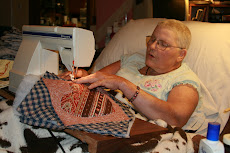TOXICITY
Toxic chemicals aren't just a threat in the outdoor environment. They're creeping into American homes.
Over the past decade, a growing number of scientific studies have warned of health threats from toxins in the kitchen cupboard, laundry room, garage, bathroom and bedroom.
Household cleaning products, paints and bleaches, long have been criticized for containing organic chemicals that can cause cancer. Now they are joined by natural gas stoves, home computers, carpets, wood paneling, mattresses, cosmetics, plastic car seats, air fresheners and leaky roofs ” All sources of harmful compounds.
Even the dust that collects in carpets can contain pesticides, lead, cadmium, bacteria, mold, dust mites and animal dander that have been linked to asthma, allergies, lead poisoning, birth defects, cancer and learning disabilities.
Many scientists agree that people are exposed to far more pollution inside their home -- where they typically spend 65 to 90 percent of their time -- than outdoors.
Threat potential high
Pollutants emitted indoors are about 1,000 times more likely to be inhaled than outdoor emissions. What are some of the main threats?
Formaldehyde is given off by many kinds of particle board, plywood, wood cabinets and composite wood products.
Flame retardants, contained in computers, television sets and carpeting, in some cases are emitted into the air naturally, and in other cases enter the environment through wear and tear.
Phthalates, which make vinyl and other plastic products softer and flexible, also are found in many cosmetics.
Convenience trumps risk
The health risks of indoor air pollution are hard to pin down, because it's hard to calculate the odds that low levels of each compound found inside the home will cause illness.
"If you've got a chemical in a jar on a shelf and the jar is closed and nothing is coming out of that jar there is no risk. If you open a jar, a chemical can get into the room,'' says Linda Birnbaum, the Environmental Protection Agency's director of environmental toxicology.
Another expert says she has learned to live with the uncertainty of the risks even as she has studied the products.
"I use pesticides, eat non-organic food and buy all the cleaning products on the cleaning products aisle,'' says University of Arizona professor Mary Kay O'Rourke. "I follow the directions, make sure the house is well vented. I know that non-toxic alternatives are out there, but I use whatever is most convenient for me. If I'm going to run down non-toxic alternatives, that's going to take time I don't have.'' Intersting comment!!
What it comes down too izz how much do you want to avoid sickness.
SSNUFFY
Subscribe to:
Post Comments (Atom)














No comments:
Post a Comment